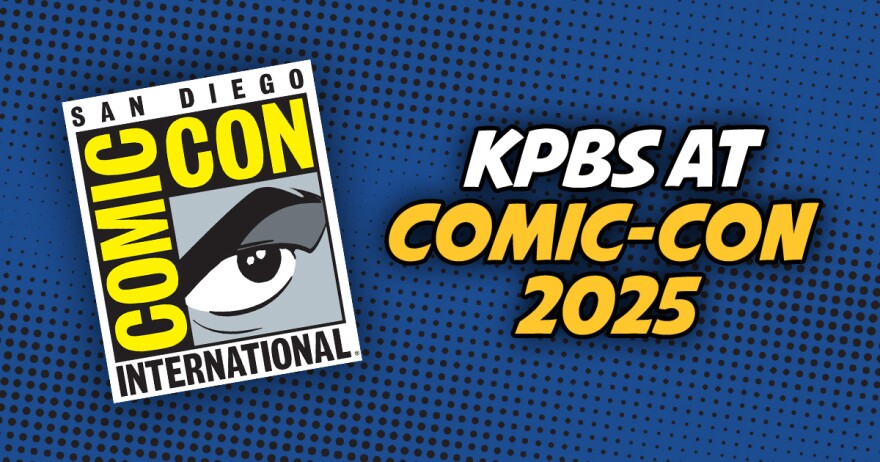San Diego is famous for Comic-Con, the celebration each July of comic book and geek culture, but the rest of the year the city's vibrant comic book scene goes virtually underground.
Alonso Nuñez is busy trying to change all that, a panel at a time. Comic book art is one of the great loves of his life, a love that he hopes to pass along to others.
“I grew up loving comics,” said Nuñez, 33. “I got my bachelor’s of fine arts in comic book illustration from the School of Visual Arts.” His diploma the New York university hangs on a wall at Little Fish Comic Studio, where he teaches all levels of comic book and manga art to students of all ages.
The school is almost hidden on a leafy tree-lined street in Ocean Beach. Inside, the place is lined with bookshelves and chalkboards, and there is art on every wall. The restroom is plastered, floor to ceiling, with comic strips.
Little Fish is the only place in San Diego that teaches exclusively comic book and manga art. Nuñez got the idea after mentoring an after-school program at High Tech High in Chula Vista.
“I had so much fun doing it that I decided, you know, I think this needs to be a full-time thing,” he said. He and co-founder Patrick Yurick opened Little Fish in 2012, and since then he has been the school’s year-round instructor.
Nuñez, a San Diego native, remembers the evolution of Comic-Con from a small cosplay-studded gathering of people dressed as their favorite characters to the huge Hollywood affair it is today.
“It was always interesting how, after Comic-Con would end, you would have this huge festival of four days. ... Comics were everything in the city for four days. The other 361 days, comics were nonexistent,” Nuñez said.
“So, I wanted to kind of open up the comic world to San Diego a little bit more and have a little bit more connection.”
One of his students, Zyanya Hernandez-Grant, is 16 and attends the School of Creative and Performing Arts, a San Diego Unified magnet campus in Paradise Hills. She and her friend and classmate, 17-year-old Serena Leitner, take the bus to Ocean Beach at least once a week to further develop their art and storytelling skills.
“I want to go into graphic design and animation, and eventually I want to work for a major company, like Disney,” said Zyanya. “I’m really interested in storytelling, and that comes out in my art.”
She said she is strongly influenced by Asian comic and cartoon art, particularly manga — Japanese comic books — and anime, a style of animation that originated in Japan, and which often contains adult concepts or content.
So is Serena Leitner, who wants a career in video-game design. She said Little Fish has helped her master technical points that she would never have worked out on her own. It has also taught her to work to deadline.
“I did comics all the time when I was younger, but I didn’t know about the storytelling elements, or about lettering, or about any of that,” said Serena. “I was just doing it for the sake of doing it. And so I learned a lot about the technical side of comic making. And I think it’s making my art better. I’ve learned a lot here.”
Lessons range from the practical, like shading and drawing techniques, to conceptual, like how comic panels mesh and flow together to tell a story on a printed page or a webpage. That goes well beyond the Sunday comics’ model of five or six panels that are approximately the same size and shape.
Alonso Nuñez said the interdisciplinary nature of comic and graphic novel art means that students are forced to intertwine text with pictures, showcasing and strengthening two very different aspects of storytelling.
He said learning to tell stories this way is a fundamental part of his teaching philosophy.
“They have to find a way to not only make that sound interesting as a piece of writing in and of itself, but it has to work in the context of the art,” he said. "So the writing has to be dynamic, but also flexible, and be able to bend around the art, which forces the students to adapt their writing.”
The name of the school comes from a children’s book in which little fish are frightened by bigger fish, so they band together to scare the big fish. It not only encapsulates the cooperative nature of San Diego comics, but is also a deliberate nod to the size of Comic-Con, and the people in San Diego who are trying to carve out an identity beyond those four days a year.







